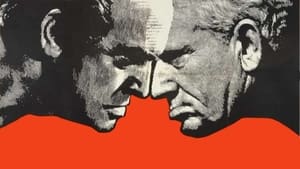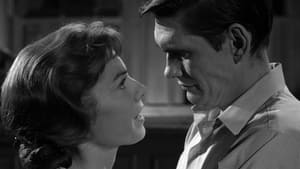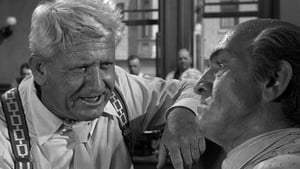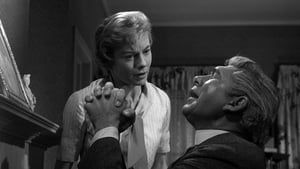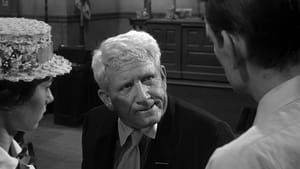Video Sources 0 Views
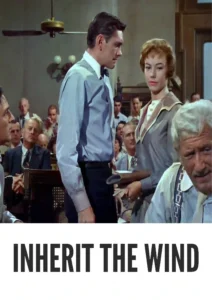
Download Inherit the Wind (1960) Colorized HD | Spencer Tracy | Courtroom Drama Classic
Synopsis

Step into the intense world of legal and moral conflict with Inherit the Wind, a gripping courtroom drama from 1960, now beautifully colorized for a powerfully immersive viewing experience. This film, directed by Stanley Kramer, delivers a thought-provoking blend of historical events, compelling characters, and timeless themes. Perfect for fans of classic dramas and those interested in stories that challenge societal norms, this HD download brings a pivotal moment in American history to your screen. Also known under the title The Wind of Inheritence.
Inherit the Wind is a dramatized account of the 1925 Scopes Trial, also known as the “Monkey Trial.” The story centers around Bertram Cates (Dick York), a young schoolteacher in the small town of Hillsboro, Tennessee, who is arrested for teaching Darwin’s theory of evolution, which is against state law.
The trial pits two titans of the legal world against each other: Henry Drummond (Spencer Tracy), a renowned defense attorney known for championing unpopular causes, and Matthew Harrison Brady (Fredric March), a charismatic and influential political figure and three-time presidential candidate, who represents the prosecution and the traditional religious beliefs of the town. The courtroom becomes a battleground for ideas, with Drummond and Brady debating the merits of free thought versus fundamentalism, science versus religion, and individual freedom versus societal norms.
As the trial progresses, the personal lives and beliefs of the townspeople are brought into sharp focus, revealing the deep divisions and prejudices within the community. Inherit the Wind explores themes of intellectual freedom, the conflict between science and religion, and the importance of critical thinking. The film culminates in a powerful and moving verdict that leaves a lasting impact on both the characters and the audience.
The film features a stellar cast of actors who bring this landmark story to life:
-
Spencer Tracy as Henry Drummond
-
Fredric March as Matthew Harrison Brady
-
Gene Kelly as E.K. Hornbeck
-
Dick York as Bertram Cates
-
Donna Anderson as Rachel Brown
Inherit the Wind falls into the genre of courtroom drama, enriched with elements of historical drama and social commentary. Its compelling narrative and powerful performances make it a captivating and thought-provoking film.
Released in 1960, Inherit the Wind reflects the social and political tensions of the Cold War era, particularly the anxieties surrounding intellectual freedom and the fear of dissenting opinions. The film revisits the Scopes Trial, a highly publicized event that captured the nation’s attention in the 1920s and highlighted the ongoing conflict between traditional religious beliefs and modern scientific thought.
This colorized version of Inherit the Wind has been carefully enhanced using modern digital techniques, enriching the visual experience while preserving the film’s original atmosphere of tension and drama. The colorization process involved meticulous analysis of the grayscale tones in the original black and white footage and assigning appropriate colors to each scene. This detailed process breathes new life into the characters and settings, making the story even more compelling for contemporary audiences. While debates about the artistic value of colorizing classic films continue, it also serves to introduce these important stories to new viewers, ensuring their continued relevance for future generations.
-
: Stanley Kramer
-
: Nedrick Young (as Nathan E. Douglas), Harold Jacob Smith
-
: the play Inherit the Wind by Jerome Lawrence and Robert Edwin Lee
-
: Ernest Laszlo
-
: Frederic Knudtson
-
: Stanley Kramer Productions
-
: United Artists
-
: 128 minutes
-
: MP4
-
: HD (1080p)
-
: Compatible with most devices, including smartphones, tablets, computers, and smart TVs.
Inherit the Wind (1960) is widely regarded as a powerful and thought-provoking film that tackles important social and political issues. The film received critical acclaim for its compelling performances, intelligent script, and masterful direction. It remains a relevant and enduring classic, sparking conversations about intellectual freedom, the conflict between science and religion, and the importance of critical thinking. It’s an evergreen movie in the judicial system, some call it Wind of Inheritance.
-
: What is Inherit the Wind about?
-
A: Inherit the Wind is a courtroom drama about the 1925 Scopes Trial, in which a teacher is prosecuted for teaching evolution.
-
-
: Is Inherit the Wind (1960) based on a true story?
-
A: Yes, it is a dramatized account of the Scopes Trial, also known as the “Monkey Trial.”
-
-
: Is this version of Inherit the Wind colorized?
-
A: Yes, this version has been professionally colorized to enhance the viewing experience.
-
-
: What makes Inherit the Wind a relevant film today?
-
A: Inherit the Wind continues to be relevant due to its exploration of intellectual freedom, the conflict between science and religion, and the importance of critical thinking.
-
-
: What is the download format?
-
A: The download format is MP4, which is compatible with most devices.
-
-
: What resolution is the download?
-
A: The resolution is HD (1080p), providing a high-quality viewing experience.
-
Watch Inherit the Wind Today!
